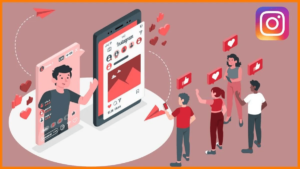Tweaks to Your Landing Page to Increase Conversion Rate

Your business site ticks all the right boxes – it’s highly optimized, has an impeccable SEO strategy, has high traffic rates from your effective PPC campaign, and it ranks within the top ten search results. Everything you could possibly want from a business site – almost. Your conversion rate tells a different story. Despite your best marketing efforts, your landing page is letting you down, but by using these landing page tips you can increase your conversion rate.
Keep It Short and Simple
Landing pages are designed exclusively to engage visitors so that they take interest in your business, helping you generate more conversion. They are not intended to explain every aspect of your business, which is why landing pages should be simple, crisp, and highly attractive, and should have as little content as possible. A short brief of your USPs is more than enough to get you more conversions – you can explain more about your business in the other main pages of your website.
Encourage People to Trust You
The more transparent your landing page is, the more people will trust your business, which in turn can have a positive effect on your conversion rates. Social proof can have a profound effect on your visitors’ minds. Anything that socially validates your business such as testimonials, awards, certifications and accomplishments can influence your visitors to trust your business, and potentially convert them into paying customers.
It’s important, however, to carefully select the cream of the crop rather than clutter your landing page with every testimonial and award you may have received. If visitors are faced with a wall of text, no matter how great, they may move on, but if a few short but highly positive testimonials are available, they may trust your business more.
Provide a Short Online Form
Your landing pages’ content has worked its magic – your visitors are so impressed, they want to do business with you. Now what? To help them get started, providing a simple contact form is the simplest way of allowing your visitors to begin the communication process. Keep the information required as simple as you can – to encourage users, you’ll want them to input as little information as possible. Anything more than email, name and message may become too arduous for them and they may move on. If you do require more information, it’s best not to ask for too much personal information as people may get suspicious, and the trust you gained will be lost.
Calls-to-Action
The impact of your call-to-action is dependent on two things: where you place it and how you phrase it. With that being said, let’s first take a look at the importance of where you place it.
Despite what best practices say, putting your call-to-action above the fold is not always the answer. For anyone unfamiliar with what above the fold is, it refers to the portion of your website or landing page that is visible without having to scroll down.
In recent years, studies were released stating that content placed above the fold attracted 80% of a consumer’s attention. Marketers were right to interpret this as a sign to always place their value proposition above the fold. They were wrong, however, to think that meant their call-to-action always had to be there.
By moving the page’s CTA below the fold, it yielded a 304% increase in conversions. This is the result of a direct correlation between the complexity of a product offering and its location on a landing page.
Similar to the way you would handle any situation in life, the complex ones require more time. Instead of forcing your call-to-action on a visitor before they even understand your offer, gradually introduce them to your product/service in a progressive fashion.
If your product or service requires a lengthy explanation in order to convey the full scope of its benefits, it is better to put the call-to-action at the bottom of your landing page. That way, you are giving your visitors more time to digest the information before trying to pressure them into taking your intended action.
The second factor of a call-to-action that we are going to look at is how you phrase it. One of the most beautiful and frustrating things about the English language is our ability to say the same exact thing at least 10 different ways. Your call-to-action is no different, except that the choice you make out of those 10 different options, even if they all mean the same thing, could make all the difference to your visitors.
The image below illustrates the impact that using ‘Get’ vs ‘Order’ made on conversion rates.
 Using ‘Get’ in the call-to-action increased conversion rates by 14.79%. Even though both calls-to-action provide the same offer, the way that offer is phrased has a different psychological impact on prospects.
Using ‘Get’ in the call-to-action increased conversion rates by 14.79%. Even though both calls-to-action provide the same offer, the way that offer is phrased has a different psychological impact on prospects.
Best practices typically suggest using actionable language in your CTA. CTA’s such as ‘Sign Up’, ‘Register’, ‘Download’, and ‘Order’ are the commonly used actionable phrases.
The truth is that while ‘Order’ emphasizes what a visitor has to do, ‘Get’ converts better because it emphasizes the benefit the user will receive. This benefit-focused approach is a marketing tactic that should also be incorporated throughout your landing page copy, not just your call-to-action.
Images
Using images on landing pages is a common best practice. The split-test below shows one original landing page and its variation, with the only difference being one has an image and one does not. Can you guess which one performed better?
 Version A surprisingly had a 24% increase in submissions without using an image on the page. While the image of the woman above the opt-in form in Version B may have contributed to the overall aesthetics of the page, looks aren’t everything when it comes to conversion.
Version A surprisingly had a 24% increase in submissions without using an image on the page. While the image of the woman above the opt-in form in Version B may have contributed to the overall aesthetics of the page, looks aren’t everything when it comes to conversion.
Like everything else on your landing page, your image needs to have a purpose for being there. Not only does the image in Version B scream “stock photo” (even though it isn’t), it pushes the opt-in form further down the page, which as I mentioned in the previous section, is not necessarily always a bad thing, but is something you need to take into consideration depending on the complexity of your product.
Just like the previous example, a majority of people got this one wrong. Version B proved to be more effective, with a rise in completion rates of 12.6%. This goes to show that, believe it or not, there are times where security badges can actually hurt your landing page’s performance.
What is intended to make your visitors feel safe and secure can sometimes lead to a wrongful association of you asking for money? Since visitors are used to seeing security badges on the check-out pages of websites, putting these on your opt-in form can actually scare them away thinking that you are going to ask for their money next. While frequent web users typically don’t make this association, not all of your visitors fall into that category; therefore sometimes it is better to save the security badges for later on in your sales funnel, or a different part of your landing page than the opt-in form.
Landing Page and Ad Copy
With the rise of Google Adwords came the importance of relevancy between ad copy and landing page copy. This correlation impacts both your Quality Score and search engine ranking, but how important is it from the perspective of your visitors?
Matching your ad copy to your landing page copy is extremely important to your visitors.
With on average only seven seconds to capture a visitors’ attention, it’s important that you immediately convince your visitors they are in the right place. Using a sub-header that matches what was used in the ad copy, reassures visitors that they are in the right place.
The better and sooner your landing page complements your ad copy, the better your page is going to convert. This is probably the only time (I hope) you will hear this from a fellow marketer, but when it comes to ad copy and landing page alignment, treat your visitors like dogs.
Create a scent trail for them to follow that keeps stringing them along towards your intended action. If you do not immediately assure them they are moving in the right direction towards what they are looking for, they are going to assume they are in the wrong place and start sniffing somewhere else.
Navigation Bars
A popular best practice is to avoid putting navigation bars on your landing pages. Although they are helpful to implement on your website, when it comes to landing pages they tend to distract and lead visitors away from the intended action. Yet, 84% of landing pages still include navigation bars.
Simpler is always better when it comes to landing pages. The easier you make it for visitors to focus on their primary objective, the easier it is to convert them into customers.
If there is one thing that you should have learned from all of these landing page A/B tests, it’s that you never really know what’s going to happen. Just because those results came out of the split-tests, does not mean your business will have similar success. The more tests you run, the better idea you will get of how your particular audience reacts with the different elements on your landing page. Your business should never have a final destination in mind when it comes to A/B testing. Here the example of exceptional cro case study with an 7.5% uplift in conversion rate of the landing page that was already converting at a rate of 49.1%. Your landing page could always be better, which is why it’s up to your business to test again, and again, and again.
So what else can you do right now to start optimizing conversion rates and begin producing happier customers? Start testing until the conversions increase.






